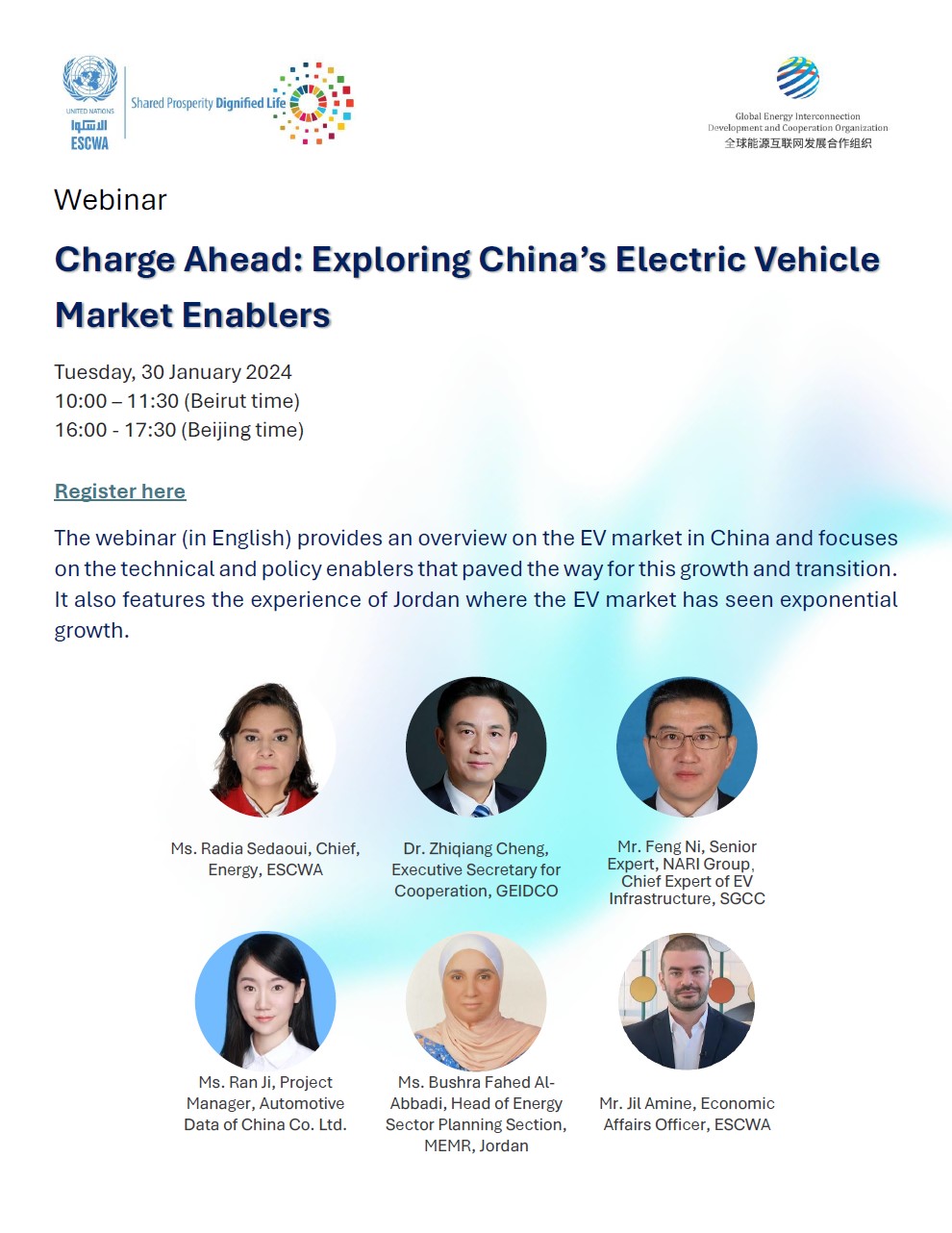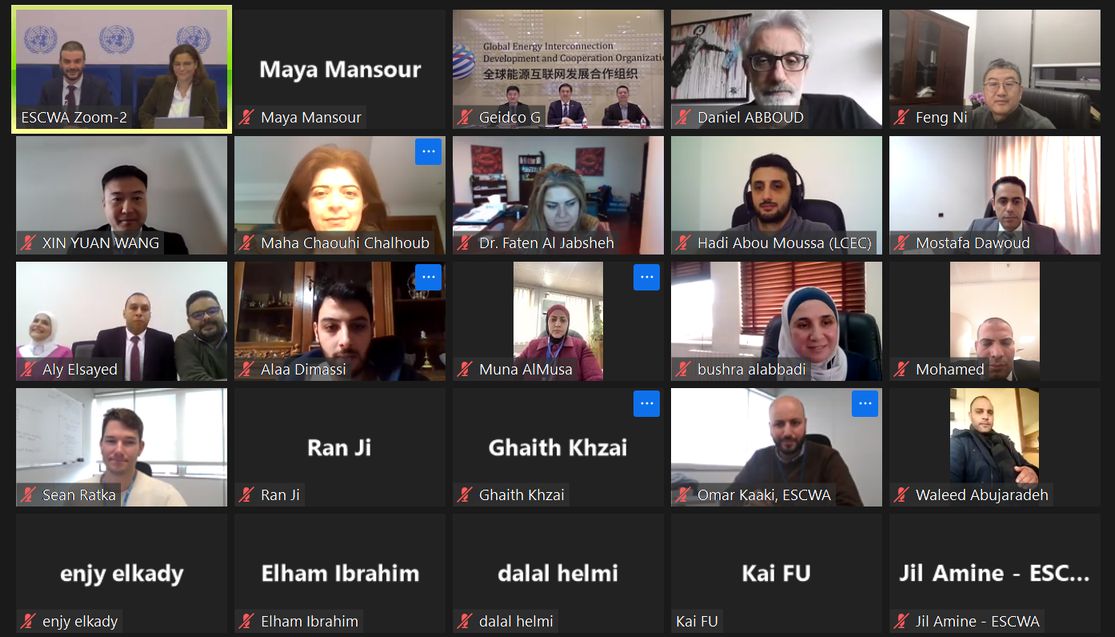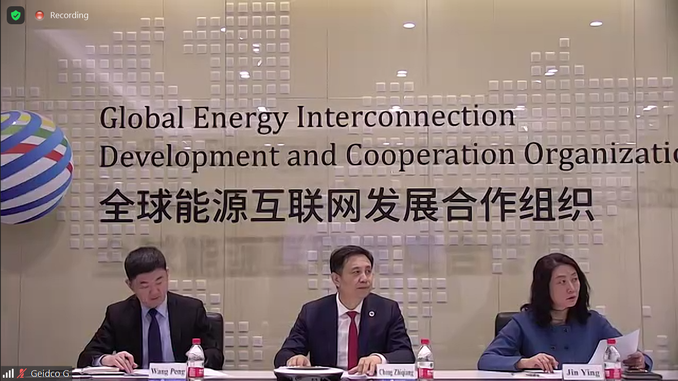ESCWA and the Global Energy Interconnection Development and Cooperation Organization (GEIDCO) are organizing a webinar entitled “Charge ahead: exploring China’s Electric Vehicle Market Enablers”.
The webinar provides an overview on the electric vehicle (EV) market in China, and focuses on the technical and policy enablers paving the way for growth and transition. It also features the experience of Jordan, whose EV market is experiencing exponential growth.
The webinar is part of a series of webinars and workshops that emphasize reverse knowledge opportunities for the Arab region and address a variety of topics related to regional energy collaboration.



